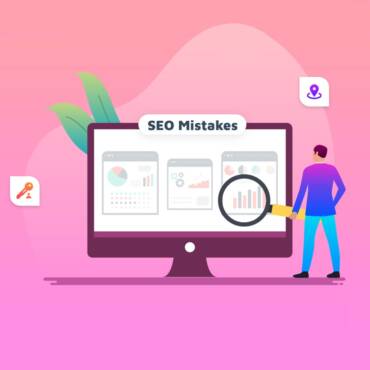SEO is an essential component of any marketing strategy when competing in the digital arena. However, having a well-formulated SEO brief will keep your goals, strategies, and deliverables focused. So why do you need an SEO brief? here are some key things to include for optimal results.
Why an SEO Brief is Needed for Success

An SEO brief is simply a kind of roadmap that determines the direction of the SEO strategy of a project or campaign. Without it, there is always a higher risk of miscommunication, poor planning, and missed opportunities. Why does it matter?
– Objectives are clear: An ideal SEO brief should have defined objectives for the project. For example, these can be in the form of increasing organic traffic, keyword rankings, or even online presence. This ensures all parties clearly know the endgame.
– Team Alignment: SEO is a holistic practice that involves coordination among various stakeholders such as content creators, web developers, and digital marketers. An SEO brief ensures effective team coordination. It gives a clear understanding to each individual in the work they need to do and is very specific about what has to be done to reduce confusion and ensure a smooth workflow.
– Better Utilization of Resources: An excellent SEO brief guides clear guidelines and sets the expectations upfront so that it optimizes the usage of time and resources. It allows teams to focus more on high-impact activities instead of wasting a lot of time using trial and error approaches.
What an Excellent SEO Brief Looks Like

A. Overview and Objectives
Start with a description of the project, including background and current SEO performance. Clearly state what would constitute success, e.g., increased organic traffic, better keyword rankings, or greater engagement.
B. Target Audience and Buyer Personas
It also helps you understand who your target audience is; from age, status, and preference, it becomes crucial for you to focus on buyer personas because the language and wording used will reflect their search behaviour and preferred keywords. It then leads you to guide keyword research and content creation to hit a gong that resonates with that target audience.
C. Keyword Research and Target Keywords
One of the most foundational elements of any SEO brief is identifying target keywords. Conduct thorough keyword research to find relevant keywords for your business, including both short-tail and long-tail options. Think about search volume, competition, and user intent, and then list primary, secondary, and related keywords for each piece of content.
D. Competitor Analysis
Analyze your competitors’ strategies and find gaps for your site. You can actually identify strengths and weaknesses in content, keyword targeting, and backlink profiles so that you’d be able to know the competitive landscape and set realistic SEO goals.
E. On-Page SEO Guidelines
Include strict guidelines for on-page SEO, including guidelines on the optimization of a meta title, meta description, header, and internal linking structures. It should present requirements on image optimization, structure on URL, and word length content. In general, on-page SEO guidelines enable site or page consistency, and the overall results increase with them.
F. Content Strategy and Recommendations
Quality content is necessary to achieve the successful execution of an SEO campaign. Identify the appropriate strategy in terms of content types, topics to be covered, and target keywords.
Additionally, set words, tone, and style guides to qualify for the minimum SEO standards and a brand voice reflection.
G. Technical SEO Requirements
Technical SEO is equally important in ranking in search engines. Provide any technical requirements such as mobile optimization, site speed improvements, schema markup, and XML sitemaps. Identify known technical issues that could impact the performance of SEO work, such as crawl errors or broken links, and give solutions to how to eliminate them.
H. KPI and Metrics for Success
Meaning of KPIs In this step, you will define what you will measure to determine your success. Examples include organic traffic, keyword rankings, bounce rate, conversion rate, and backlink quality. Indicate which tools, such as Google Analytics, SEMrush, etc., will be used to track/report on them.
3. How Not to Mess Things Up in a Poorly Constructed SEO Brief

Without an effective SEO brief, most projects end up off the track. The issues may include:
Misaligned goals
Poor implementation
Misset opportunities
Lack of Clear Objectives: Once the objectives are not defined, it becomes very difficult to realize whether one has reached or is on the right track. In such a case, the strategy cannot be adjusted effectively.
Insufficient Keyword Research: Doing inadequate keyword research can mean targeting the wrong audience or missing valuable traffic opportunities.
Technical SEO Neglected: If the technical SEO requirements are not considered, the performance of a website and its search engine presence will be limited.
How to Write an Effective SEO Brief

On point: The more precise your brief, the less vague.
Extensive and Specific: Provide all possible information pertaining to what the client wants and what has to be done during the implementation of their SEO strategy. The more details you can offer, the lesser the scope for vagueness.
Use Data and Insights to Support Recommendations Use recommendations that are based on data obtained from Google Analytics, Ahrefs, Moz, etc. This will help one set realistic goals and strategies that are backed by data-driven insights.
Kebelem: Involve key stakeholders in drafting the brief to clarify which parts it covers and/or whether it meets or supports business objectives.
Conclusion
Having a proper SEO brief is the backbone of a proper SEO strategy. It lines up the team, makes objectives clearer, and spells out exactly what has to be done and thus better execution and better results. The more time spent in creating a comprehensive SEO brief, the better; this is going to pay for itself when companies become better for increased visibility, higher organic traffic, and better search engine rankings. A good SEO brief is not just a best practice but more of a necessity nowadays in an ever-changing digital environment that makes a strategy sustainable for a company.
